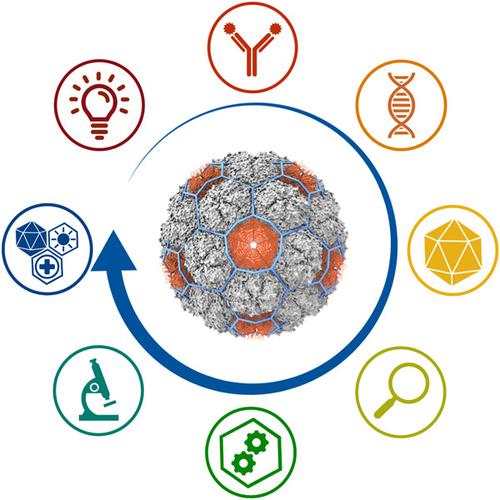当前位置:
X-MOL 学术
›
Biotechnol. Bioeng.
›
论文详情
Our official English website, www.x-mol.net, welcomes your feedback! (Note: you will need to create a separate account there.)
Advances in Encapsulin Nanocompartment Biology and Engineering.
Biotechnology and Bioengineering ( IF 3.8 ) Pub Date : 2020-09-12 , DOI: 10.1002/bit.27564 Jesse A Jones 1 , Tobias W Giessen 1, 2
Biotechnology and Bioengineering ( IF 3.8 ) Pub Date : 2020-09-12 , DOI: 10.1002/bit.27564 Jesse A Jones 1 , Tobias W Giessen 1, 2
Affiliation

|
Compartmentalization is an essential feature of all cells. It allows cells to segregate and coordinate physiological functions in a controlled and ordered manner. Different mechanisms of compartmentalization exist, with the most relevant to prokaryotes being encapsulation via self‐assembling protein‐based compartments. One widespread example of such is that of encapsulins—cage‐like protein nanocompartments able to compartmentalize specific reactions, pathways, and processes in bacteria and archaea. While still relatively nascent bioengineering tools, encapsulins exhibit many promising characteristics, including a number of defined compartment sizes ranging from 24 to 42 nm, straightforward expression, the ability to self‐assemble via the Hong Kong 97‐like fold, marked physical robustness, and internal and external handles primed for rational genetic and molecular manipulation. Moreover, encapsulins allow for facile and specific encapsulation of native or heterologous cargo proteins via naturally or rationally fused targeting peptide sequences. Taken together, the attributes of encapsulins promise substantial customizability and broad usability. This review discusses recent advances in employing engineered encapsulins across various fields, from their use as bionanoreactors to targeted delivery systems and beyond. A special focus will be provided on the rational engineering of encapsulin systems and their potential promise as biomolecular research tools.
更新日期:2020-09-12


























 京公网安备 11010802027423号
京公网安备 11010802027423号